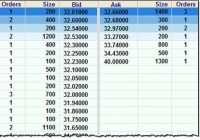Inside HACK: The Sought-After Cyber Security ETF
The cyber security industry has gained immense popularity in recent years and is the fastest-growing corner of the broad technology space. This is because cyber-attacks on enterprises and government agencies are widespread with growing Internet usage, raising the need for more stringent cyber security from hackers. Hacking has become more sophisticated, dangerous and harder for companies (and even governments) to stop. According to the report from the Global State of Information Security Survey 2015, cyber attacks across the globe have risen about 66% over the past five years and 48% from 2013. Some of the well-known companies in the recent spate of data breaches include Target (NYSE: TGT ), eBay (NASDAQ: EBAY ), Home Depot (NYSE: HD ), AT&T (NYSE: T ) and JPMorgan Chase (NYSE: JPM ). The situation will likely to worsen in 2015, as hackers will continue to adopt advanced techniques and strategies to infiltrate networks hiding their tracks. Solid Long-Term Prospects As per McAfee, cyber-warfare and espionage attacks are expected to increase in frequency. Attacks on Internet of Things (IoT) devices will rise rapidly due to whopping growth in the number of connected objects, poor security and the high value of data on IoT devices. And new mobile technologies will allow more mobile attacks. Growing awareness for the protection against these cyber threats will continue to propel demand for spending on information security. According to Gartner, global security spending will increase to $76.9 billion in 2015 from the expected $71.1 billion in 2014. Most of the growth will likely come from the rapid adoption of mobile, cloud, social and information technologies. Another data from ABI research showed that global cyber-security spending would reach $109 billion by 2020. Investors could easily tap the cyber-security spending boom and rising demand in a basket form. Investors should note that there is currently one ETF – PureFunds ISE Cyber Security ETF (NYSEARCA: HACK ) – which offers exposure to those companies that ensure the safety of computer hardware, software, networks and fight against any sort of cyber malpractices. The fund provides a good opportunity for investors to play the niche area of cyber security. This is especially true as it has been getting the first-mover advantage and has accumulated $157 million in AUM in just two months of debut while surging 3.6% in the same period. Average daily volume is solid as it exchanges nearly 227,000 shares in hand. Given this, it might be worth it to shed some light on this ETF and its holdings for those who are unfamiliar with the product, but are thinking about jumping in on the space. Below, we highlight some of the key details regarding HACK, which made it one of the fastest-growing and most successful ETFs of last year. HACK in Focus The ETF tracks the ISE Cyber Security Index, holding 30 securities in its basket. It is well spread out across components as each security holds no more than 5.01% of total assets. Ahnlab, Infoblox (NYSE: BLOX ), and Fireeye (NASDAQ: FEYE ) occupy the top three positions in the basket. From an industrial look, software and programming accounts for nearly two-thirds of the portfolio while communication equipment and Internet mobile applications round off the top three with a double-digit allocation each. In terms of country exposure, U.S. firms take the top spot at 72%, followed by Israel (12%), the Netherlands (5%), South Korea (5%), Japan (4%), Finland (2%) and Canada (1%).
